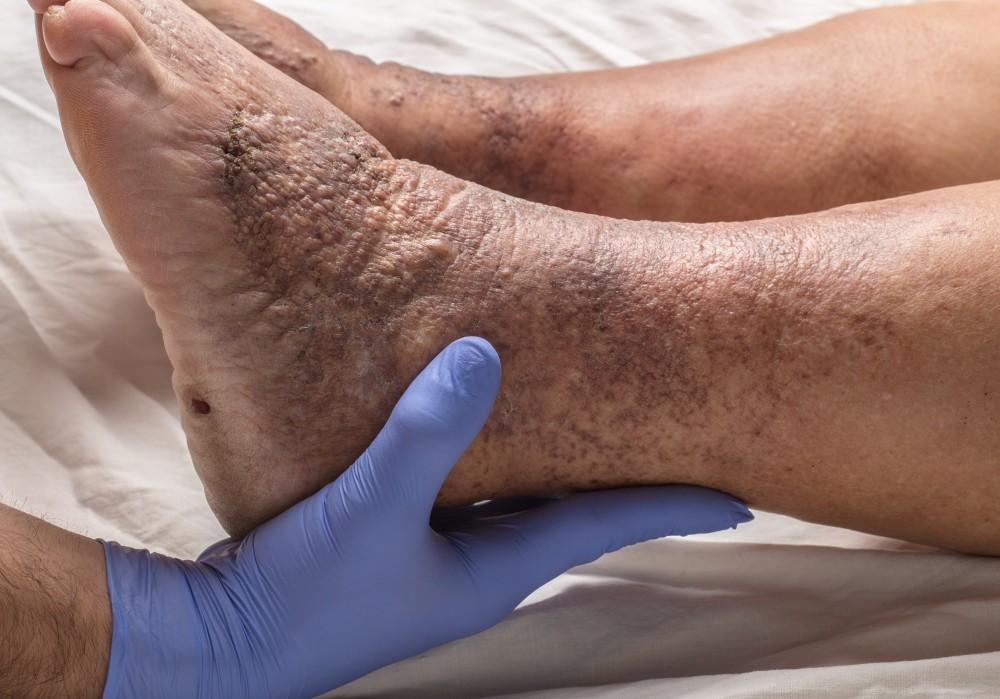Deep Vein Thrombosis (DVT) is a serious medical condition where a blood clot (thrombus) forms in a deep vein, usually in the legs. This condition can be life-threatening if the clot breaks free and travels to the lungs, causing a pulmonary embolism (PE). Understanding the causes, risk factors, symptoms, and treatment of DVT is crucial for early detection and prevention.

Causes and Risk Factors
DVT develops due to one or more of the following factors:
1. Prolonged Immobility
- Long periods of sitting or lying down slow blood circulation, increasing the risk of clot formation.
- Common scenarios include long-haul flights, bed rest after surgery, or paralysis.
2. Surgery and Trauma
- Major surgeries, especially orthopedic procedures like hip or knee replacements, increase the likelihood of DVT.
- Injury to veins from fractures or muscle trauma can also trigger clot formation.
3. Blood Clotting Disorders
- Certain inherited or acquired blood conditions can make blood clot more easily than normal.
- Conditions such as Factor V Leiden mutation or antiphospholipid syndrome heighten DVT risk.
4. Lifestyle and Medical Conditions
- Obesity: Excess weight puts additional pressure on veins.
- Smoking: Damages blood vessels and affects clotting.
- Hormonal Therapy & Birth Control Pills: Can increase clotting tendency, especially in combination with other risk factors.
- Pregnancy: Increased blood volume and hormonal changes raise DVT risk.
- Cancer: Some cancers and chemotherapy treatments can elevate clotting potential.
Symptoms of deep venous thrombosis
DVT symptoms vary, and some individuals may remain asymptomatic. However, when symptoms do occur, they typically include:
- Swelling: Sudden or gradual swelling in one leg.
- Pain or Tenderness: Cramping or soreness, often in the calf.
- Skin Discoloration: A reddish or bluish tint in the affected area.
- Warmth: Increased temperature in the swollen region.
If any of these symptoms appear, immediate medical attention is necessary to prevent complications such as pulmonary embolism.
Diagnosis of Deep Vein Thrombosis
1. Clinical Assessment
- The Wells Score is commonly used to evaluate the likelihood of DVT based on symptoms and risk factors.
2. D-Dimer Test
- Measures fibrin degradation products in the blood.
- A high D-Dimer level suggests the presence of a clot, though further testing is required for confirmation.
3. Imaging Studies
- Ultrasound: The most commonly used diagnostic tool, detecting clots in real time.
- Venography: Uses contrast dye and X-ray imaging for detailed vein visualization.
- MRI or CT Scans: Employed in cases where ultrasound results are inconclusive or when clots are suspected in deeper veins.
Treatment Options for DVT
1. Anticoagulant Therapy (Blood Thinners)
- Prevents further clot growth and reduces the risk of pulmonary embolism.
- Common medications include:
- Heparin (unfractionated and low-molecular-weight) – Used for initial treatment.
- Direct Oral Anticoagulants (DOACs) – Such as rivaroxaban, apixaban, and dabigatran.
- Warfarin (Coumadin) – Requires regular blood monitoring but remains an option for long-term management.
2. Thrombolytic Therapy
- Also known as clot-busting drugs, these are used in severe cases where immediate clot dissolution is necessary.
- Administered through intravenous (IV) infusion or catheter-directed techniques.
3. Inferior Vena Cava (IVC) Filters
- A filter is placed in the inferior vena cava to prevent large clots from reaching the lungs.
- Typically used for patients who cannot take anticoagulants.
4. Compression Stockings
- Helps reduce swelling and prevent post-thrombotic syndrome (PTS).
- Recommended for patients who experience persistent discomfort after a DVT episode.
Preventing Deep Vein Thrombosis
1. Movement and Exercise
- Avoid prolonged sitting or standing.
- Engage in regular walking and leg exercises, especially during travel.
2. Hydration
- Drink plenty of water to prevent blood thickening.
- Reduce caffeine and alcohol intake, as they contribute to dehydration.
3. Use of Compression Stockings
- Beneficial for individuals at high risk, such as post-surgical patients or those with chronic venous insufficiency.
4. Medication for High-Risk Individuals
- Physicians may prescribe prophylactic anticoagulants for individuals undergoing major surgery or those with a history of DVT.
Complications of deep venous thrombosis
1. Pulmonary Embolism (PE)
- A life-threatening condition where a clot dislodges and blocks blood flow in the lungs.
- Symptoms include sudden shortness of breath, chest pain, rapid heart rate, and coughing up blood. Immediate medical attention is required.
2. Post-Thrombotic Syndrome (PTS)
- Chronic swelling, pain, and skin changes due to long-term vein damage from DVT.
- Can lead to venous ulcers in severe cases.